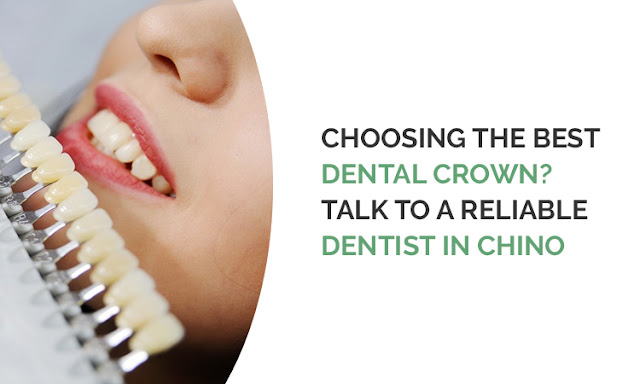A beautiful smile can easily make
anyone’s day brighter. And to make a smile beautiful, you need pearly white
teeth. However, factors like aging, smoking, alcohol consumption (red wine), beverages
(tea, coffee, soda), and certain foods can steal the whiteness of your teeth
over time. If your teeth are stained or have a naturally darker shade, you may
feel self-conscious about your smile. In such situations, professional teeth
whitening can work as an excellent way to make a positive impression with a
vibrant smile. You can even look younger and feel much confident about your
appearance by choosing Zoom Whitening. It also helps in restoring the natural
dentition after undergoing cosmetic dental procedures or removing braces. Keep
reading to know how Zoom
Teeth Whitening in Chino works and the steps involved in it.
What is Zoom Teeth Whitening?
Zoom is a revolutionary in-office
teeth whitening technique, which gives dramatically whiter teeth in a simple
and hassle-free way. The highly effective, completely safe, and super-fast the procedure makes use of proprietary technology to turn the teeth as much as
eight shades whiter on an average in just one hour. It is an affordable
treatment with immediate and long-lasting results.
How Does Zoom Whitening Work?
The treatment of Zoom whitening is
basically a bleaching process in which the discoloration of enamel and dentin
of the teeth is lightened with the help of the Zoom Whitening Gel and the Zoom
Advanced Power Chairside Lamp. The powerful gel contains specifically
formulated, pH balanced hydrogen peroxide (25%) and the lamp emits a specially
designed, low-heat UV light. When the light penetrates the teeth, the gel gets
activated and the hydrogen peroxide in it attaches itself to the stain
molecules. As the process of bleaching gets accelerated, the light catalyzes
the breakdown of hydrogen peroxide, allowing oxygen to enter the enamel and the
dentin of the teeth. This makes the stain molecules weaker and breaks them up
gently. As a result, the discoloration is removed and the teeth become whiter
while the structure of the teeth remains intact.
Steps of Zoom Whitening
Procedure
The Zoom Teeth Whitening treatment
has the following steps:
1.
At first, the dentist assesses your teeth and
gum thoroughly to ensure that they are healthy enough to receive the whitening
treatment. Your current tooth shade is also noted.
2.
Next, you are prepared for the sessions.
Retractors and lots of cotton rolls are used to prevent the upper and lower
layers of the lips and the teeth from touching each other. A protective layer
is applied to safeguard the gums and soft tissues. You also need to put on
orange safety glasses to stay protected from the laser light.
3.
Now, the very first layer of the Zoom Whitening The gel is applied to the front surfaces of the teeth. Also, the Zoom Advanced
Power Chairside Lamp is set right in front of it.
4.
As the first session of whitening starts, an
alarm is set for 15 minutes. You can relax during this period.
5.
Once the session is over, the dentist repeats it
twice or thrice to come up with the optimal results. A fresh layer of whitening
gel is applied after each session and the UV light is also adjusted as per the
requirement.
6.
Finally, your mouth is cleaned and a fluoride
paste-gel is applied to the freshly whitened teeth for 5 minutes. This is
necessary to reduce sensitivity in the teeth if any.
Zoom teeth whitening in Chino is not a suitable choice for
pregnant women, new mothers, and children under 13 years. It is also necessary
to follow the instructions of the dentist for maintaining the post-procedural
whitening effects. But for those who want to give it a try, it can certainly
bring out that gorgeous smile.









